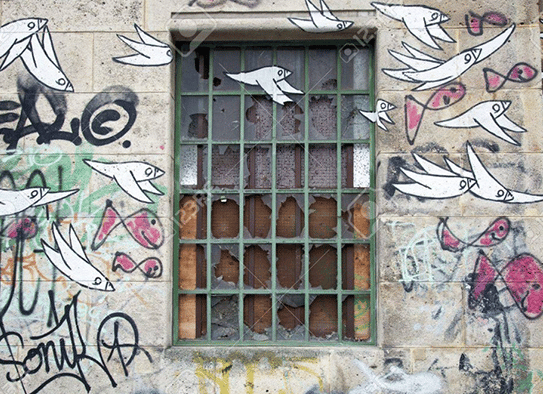Fixing Broken Windows – The Importance of Property Upkeep as The First Line of Defence

Written by Justin Quigley
It’s been 40 years since Wilson and Kelling introduced their ‘Broken Windows’ theory of crime motivation. The theory posits that crime is largely motivated by negative experiences and events, such as vandalism or theft, which lead to a sense of localised societal disintegration and a corresponding increase in the fear of crime. Their theory suggests that poorly maintained areas indicate no one cares which in turn encourages anti-social behaviour, such as vandalism, graffiti and other forms of criminality. Since its introduction, the Broken Windows Theory has been widely discussed and debated. While it is generally accepted that negative experiences (especially vandalism) lead to an increase in criminality, there is much controversy around how exactly this occurs and what can be done to prevent it from happening.
Theory is useful, but how does this relate to the real world, especially in the protection of void property? One of the most important takeaways from Wilson and Kelling’s Broken Windows theory is that the first line of defence in the protection of property, is property upkeep. Furthermore, it is critical that interventions targeted at deterring and reducing negative behaviour (e.g. graffiti) are undertaken as early as possible so that anti-social behaviour does not escalate into more impactful activity such as theft, vandalism or squatter occupation. This assertion is supported by one of the key CPTED concepts, territorial reinforcement which argues that deterioration and blight indicates a greater tolerance of disorder. Care and maintenance being the remedy.
I often come across commercial properties that have been left to deteriorate, the drive to reduce costs taking precedence. From the appearance of the first graffiti tags, the process quickly gains momentum. Rubbish accumulates, vermin proliferate, windows are broken and rough sleepers congregate. The lack of ownership clearly displayed, the property becomes a viable target for squatters. The 14th edition of the Squatter’s Handbook encourages the identification of ‘run down’ properties as possible targets for occupation, the belief being that claims of forced entry (criminal damage) would be impossible to prove due to the condition of the property. The comment, ‘the windows were already smashed’, an all too frequent assertion.
The misguided diversion of financial resources away from property maintenance is a fool’s economy, the long term cost of neglect manifesting in assorted ways, from extensive refurbishment costs to hefty legal bills associated with squatter eviction. However, if these properties were managed proactively such costs could be avoided.
In order to protect void properties and limit the opportunity for criminal activity, early intervention is key. This includes regular clean-ups and security patrols in areas deemed at high risk, such as graffiti hotspots or rough sleeping sites. Additionally, landlords/property managers should focus on site hardening through the installation of steel window screens, metal doors and anti-climb measures, as well as installing CCTV or video verification systems in strategic locations so that buildings can be monitored 24/7 in order to identify reoccurring anti-social activity before such activity detrimentally impacts the property. Allowing occupied properties to fall into disrepair does nothing but serve criminals – it’s a lose-lose situation for everyone. Early intervention will limit the opportunity for criminal activity while also saving landlords money in the long run.
Effective property protection can be achieved by implementing specific measures and strategies, such as:
- Preventative cleaning regime
- Rapid removal of graffiti
- Measures to prevent rough sleeping
- Repairing of broken windows
- Landscaping & grounds maintenance
- Removal of post (before it accumulates)
- Installation of prohibition signage
- Use of perimeter measures to denote ownership – fencing
- Use of site hardening measures – steel screens, metal doors
- Security technology – video verification systems
- Effective lighting
- Regular void property checks
An often underrated security measure is the use of regular void property checks, a proven component of a proactive approach to void property protection, by keeping an eye on activities that may be criminal in nature or simply unsightly. Patrols help identify any issues with the property, such as graffiti or vandalism, reporting concerns and empowering clients to take necessary action at the earliest opportunity.
The first line of defence is often the least costly and in many cases the most effective. By implementing a few simple measures, property owners can not only protect their property from criminal elements but also maintain its appearance and value.
For more information on our range of services or to find out how we can help you please, take a look on our website or contact Justin directly, justin.quigley@ward-security.co.uk.











